Glenelg foreshore apartments rejected – again
Plans for a 10-storey apartment building on Glenelg’s South Esplanade have been knocked back for height and heritage reasons, despite the developer scaling down the proposal after it was rejected two years ago.

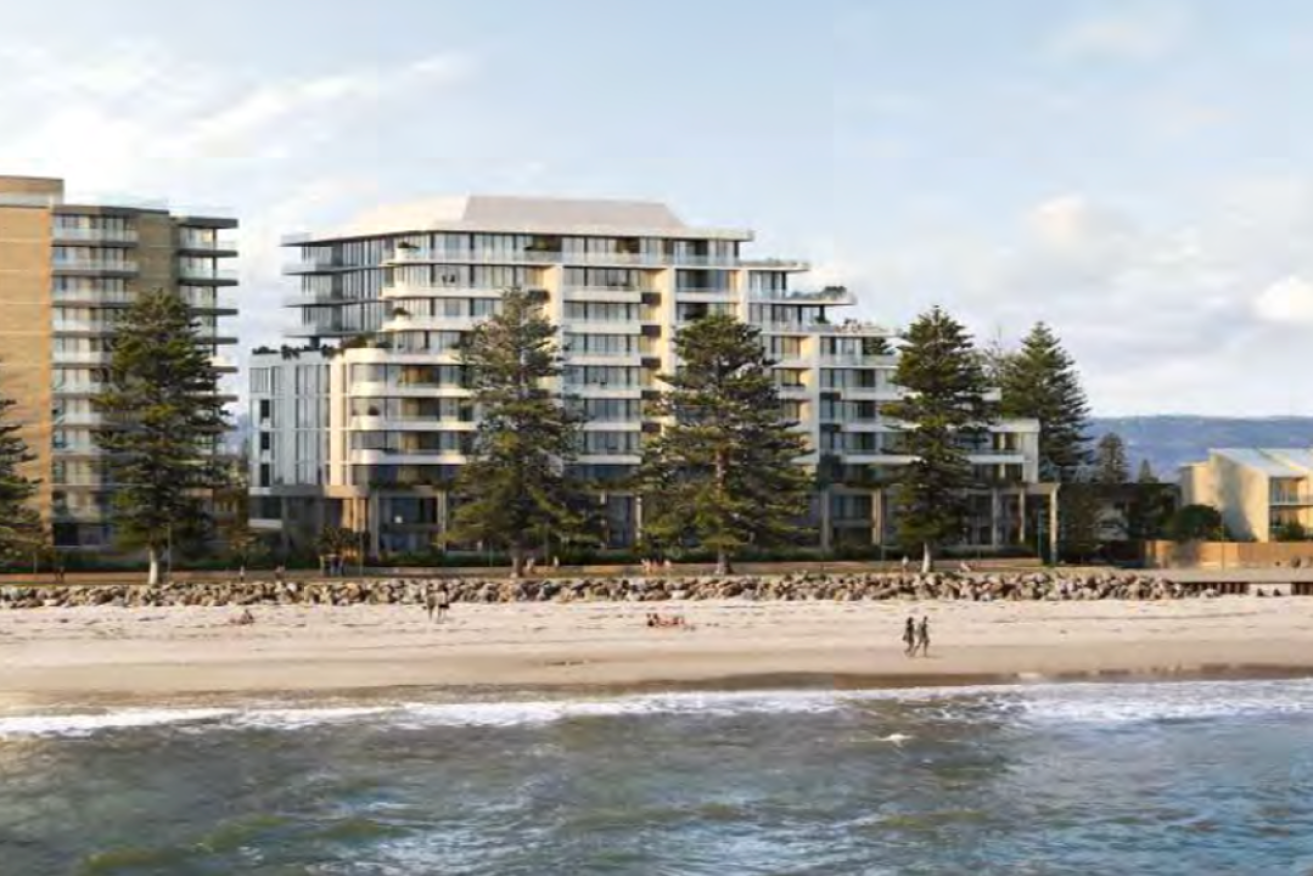
Chasecrown's 10-storey apartment proposal on the Glenelg foreshore has been refused planning consent for a second time. Image: Chasecrown/supplied
The State Commission Assessment Panel (SCAP) on Wednesday refused to grant planning consent to Adelaide developers Chasecrown to redevelop the Seawall Apartments site at 21-25 South Esplanade Glenelg, located roughly 550-metres south of Moseley Square.
Chasecrown had applied to build a 10-storey, 39.3-metre-tall building comprised of 72 apartments. The building was to slope down to four-storeys, 5.5-metres at its southern end where it adjoins low-rise housing.
The developers had in January 2021 applied to build a 13-storey tower on the site but encountered significant opposition from local residents concerned about the proposed demolition of a local heritage listed former seafront mansion and the height of the development.
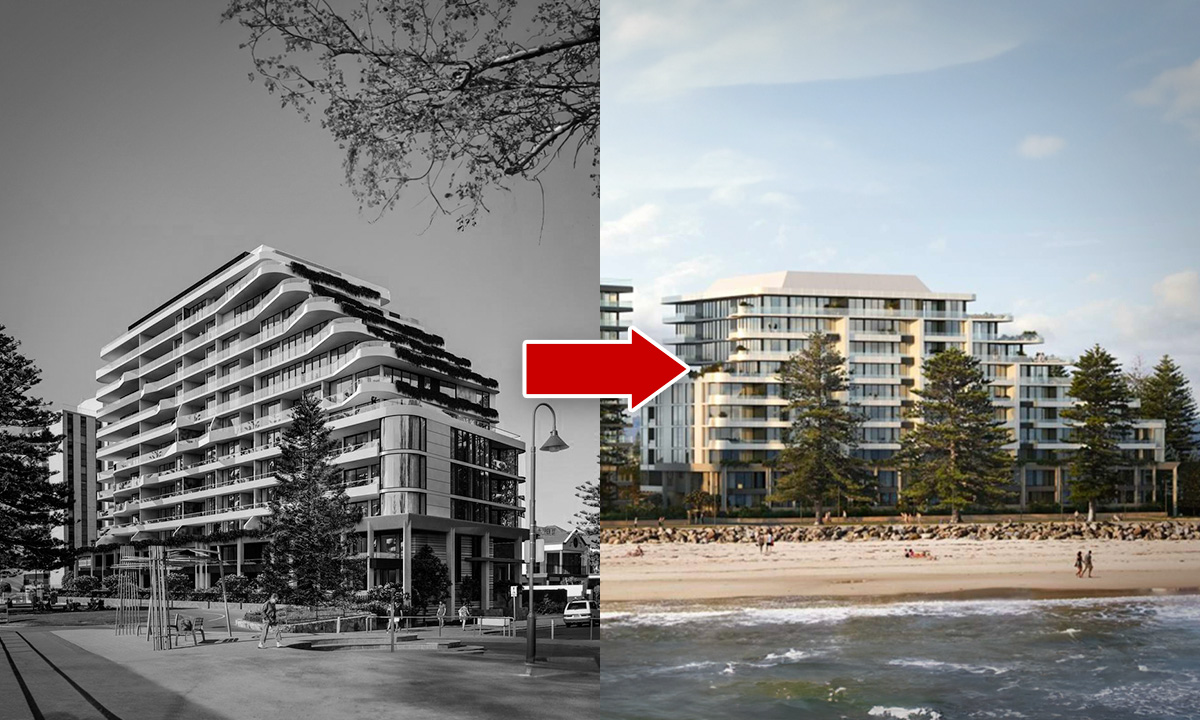
The initial 13-storey apartment proposal (left) was revised down to 10-storeys (right) in a bid to win over planning authorities. Images: Chasecrown/supplied
The SCAP rejected the 13-storey building in June 2021, ruling that it had “excessive massing… and does not adequately acknowledge and respect the existing context”.
On Wednesday, the SCAP knocked back Chasecrown’s revised 10-storey proposal on similar grounds, finding the building did not justify exceeding the site’s five-storey, 18.5-metre zoning.
“Nor does the development otherwise positively respond to the local context including the site’s frontage, depth and adjacent street frontage, and demolishing of a local heritage item,” the SCAP ruling, published on Thursday, states.
“The building would not sufficiently mitigate building massing on residential development within the neighbourhood type zones to the south and east.
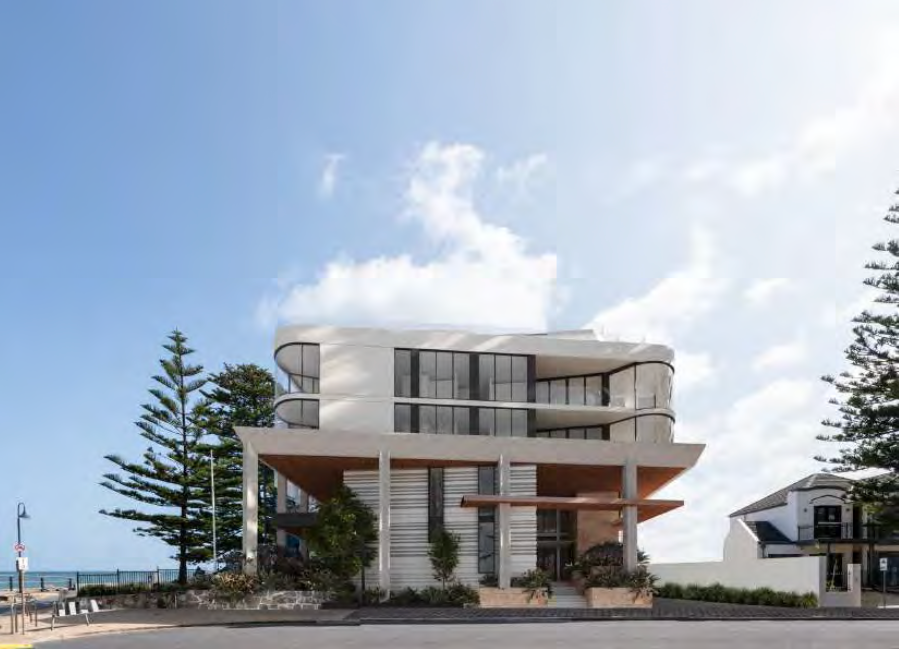
An artist’s impression of the four-storey southern end of the proposed development. Image: Chasecrown/supplied
“Nor does the building height and mass transition sufficiently to the zone boundary to maintain the amenity of residential properties located within adjoining zones.”
The SCAP also ruled that the “visual mass, form and height” of the building would be “overly prominent when viewed from adjoining allotments and public streets”.
Further, the demolition of the site’s 141-year-old local heritage building would not meet the desired outcome of the local heritage planning overlay, the SCAP ruled, while the high-rise development was deemed not to present “sufficiently high-quality design that responds appropriately to the local context”.
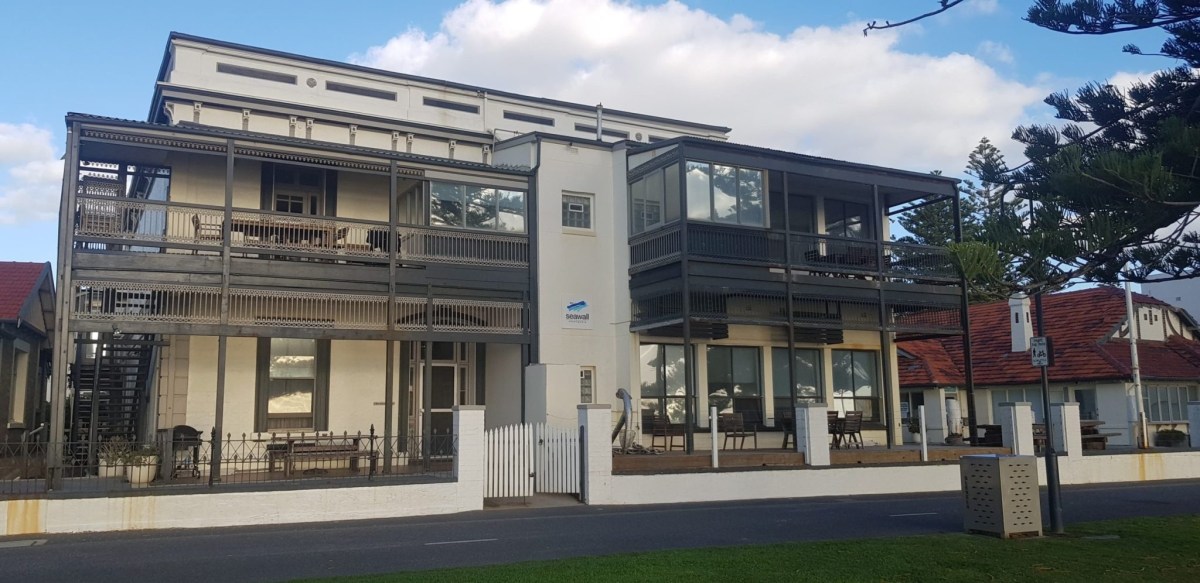
The local heritage listed former seafront mansion at 22 and 23 South Esplanade was built in 1882. Photo: Thomas Kelsall/InDaily (2021)
A Chasecrown spokesperson said on Thursday: “Chasecrown is disappointed with today’s decision by the State Commission Assessment Panel (SCAP) and will now consider its options.”
The SCAP’s ruling comes despite state government planning officer Nathan Grantham recommending the development be approved.
In his report to the SCAP, Grantham said the building was “designed to positively respond to the context of existing and expected built form within the locality”.
He noted that a 12-storey building – the Saltram Towers – is located adjacent to the development site, arguing that Chasecrown’s proposal to transition down from 10 to four storeys would “appropriately [minimise] building interface impacts to adjoining residential properties”.
Development consultants Future Urban, on behalf of Chasecrown, said that building a five-storey tower in line with the zone would create a “jarring and abrupt relationship with the Saltram Towers building”.
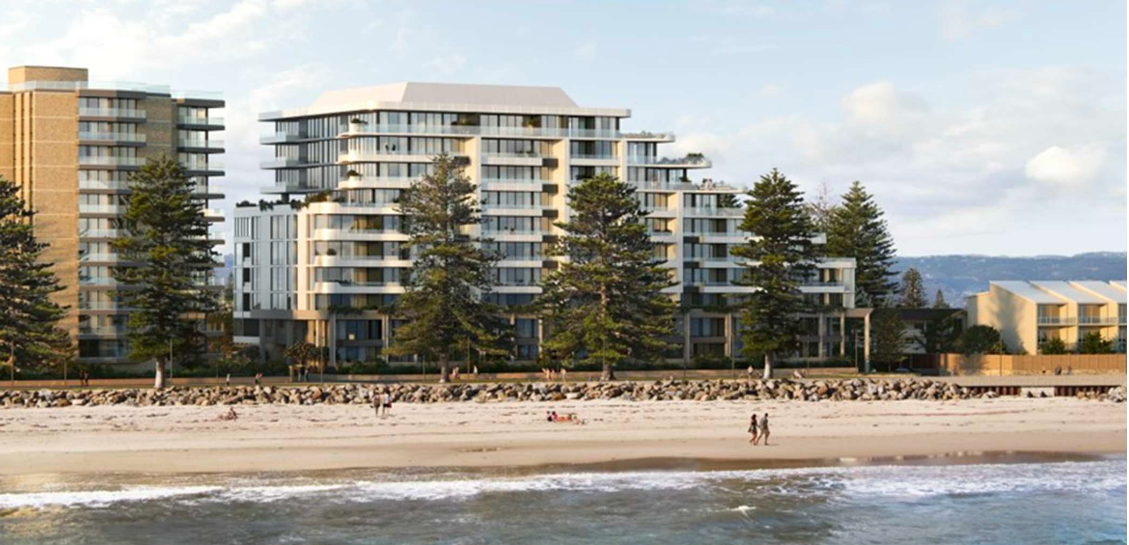
Proponents of the development argued that it would transition from the 12-storey Saltram towers (left) to the low rise neighbourhood area on the right. Image: Chasecrown/supplied
“The proposed built form and massing (of the proposed development) directly responds to the local context,” Future Urban said, “accounting for the existing and emerging character of the locality which includes both the tall, high-density development and smaller, low-rise buildings.”
Future Urban also argued that the local heritage place (LHP ) no longer warranted listing on the heritage register, citing advice from developer-commissioned heritage consultants Bruce Harry & Associates and Holdfast Bay Council’s heritage adviser.
“There is clear and irrefutable evidence that demonstrates that the LHP has been so significantly altered over the years that the overall heritage value of its external form and detailing, is very low or non-existent,” Future Urban said.
But the new 10-storey development still failed to win over Government Architect Kirsteen Mackay, who leads the Office for Design and Architecture.
MacKay labelled the original 13-storey proposal an “overbearing mass” and used the same words to describe the new 10-storey bid.
“I am unable to support the proposal in its current form due to concerns relating to the massing and built form,” she submitted in February.
“I am also of the view that the proposal is yet to fulfil the responsibility to deliver a high benchmark for good design particularly in terms of public realm contribution.”
Chasecrown did not propose to include affordable housing in the development.
Grantham, the government planner who recommended the project, said opportunities for affordable housing were “hindered” by the development’s “coveted foreshore location”.
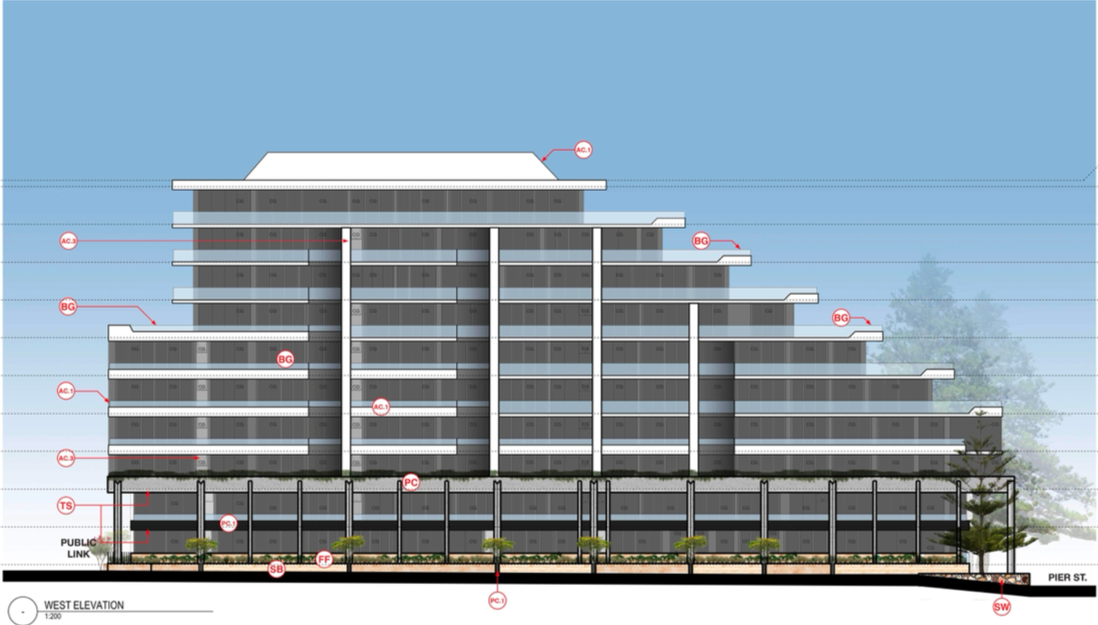
A diagram of 10-storey apartment building. Image: Chasecrown/Future Urban
Chasecrown has been looking to redevelop 21-25 South Esplanade for nearly three years. It purchased the roughly 3500-square-metre site for $20.2 million in December 2020.
After its initial 13-storey proposal was rejected, Chasecrown appealed to the Environment, Resources and Development (ERD) Court and reportedly reached a confidential agreement with the Planning Commission to proceed with a 10-storey building.
But that agreement was quashed when the ERD Court ruled in February 2022 that neighbouring residents could join the court appeal as an interested party, effectively forcing the developers to resubmit their 10-storey plans for public consultation and SCAP approval.
Chasecrown has demolished the non-heritage building at 21-25 South Esplanade. Only the local heritage building remains.




